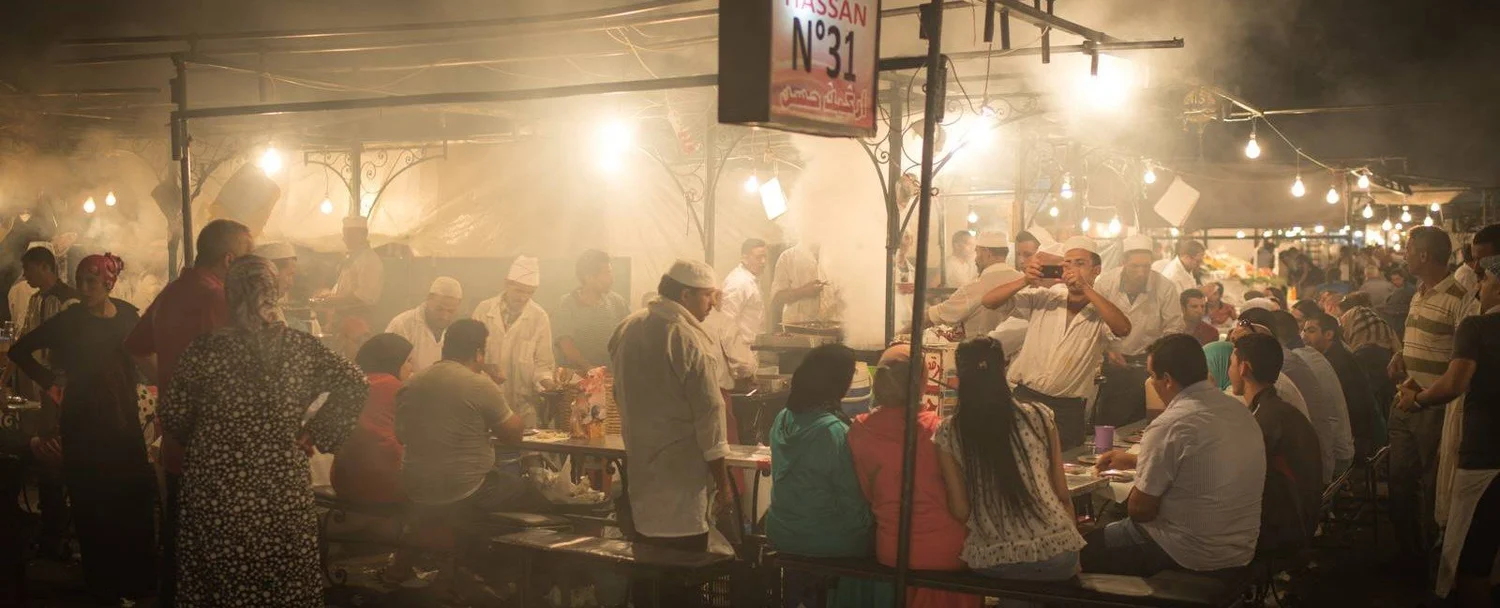Things to do While Visiting Morocco
From camel trekking in the Sahara to exploring bustling souks, discover unforgettable activities and experiences that define Morocco.
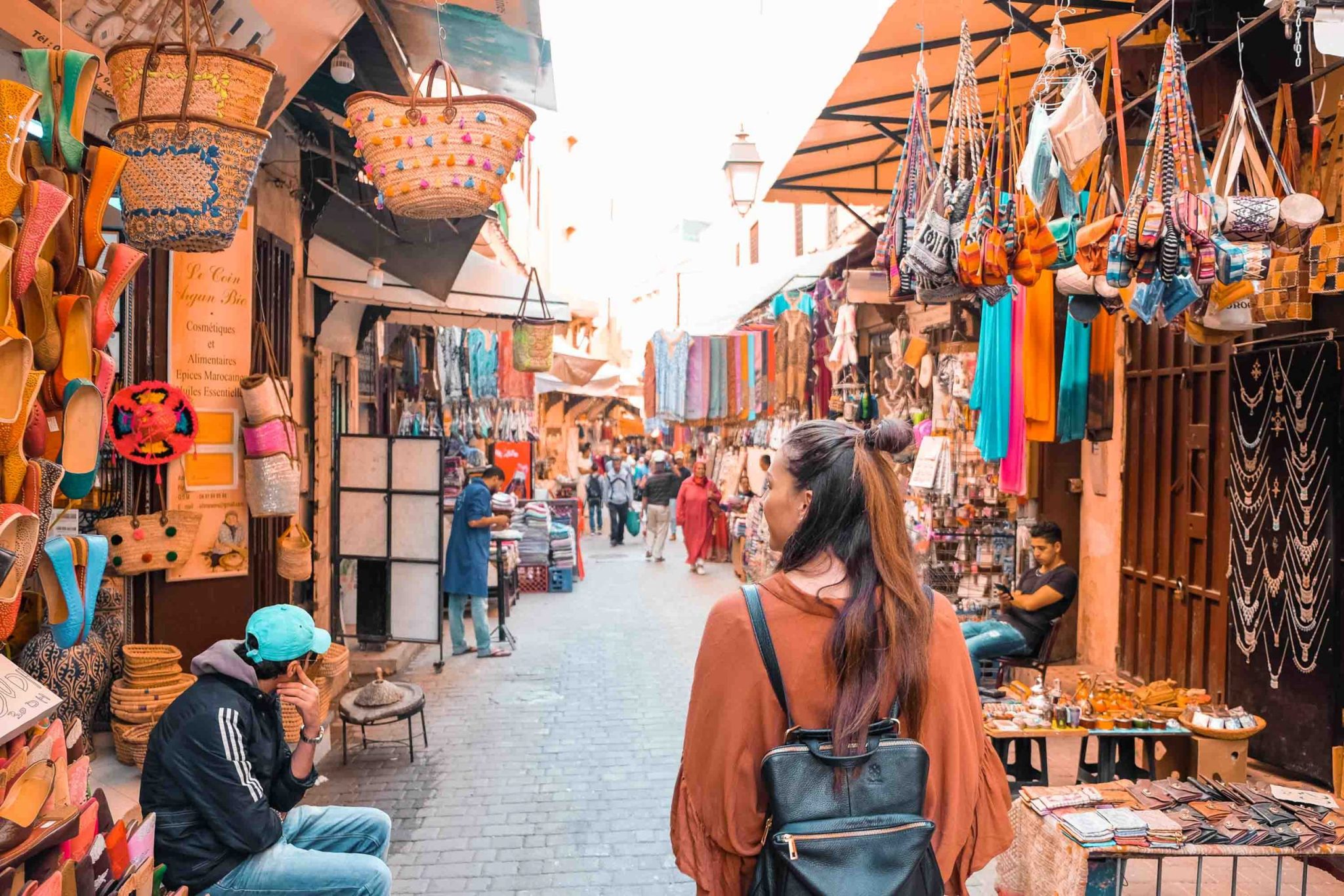
Categories
Experiences
Destinations
Posted By
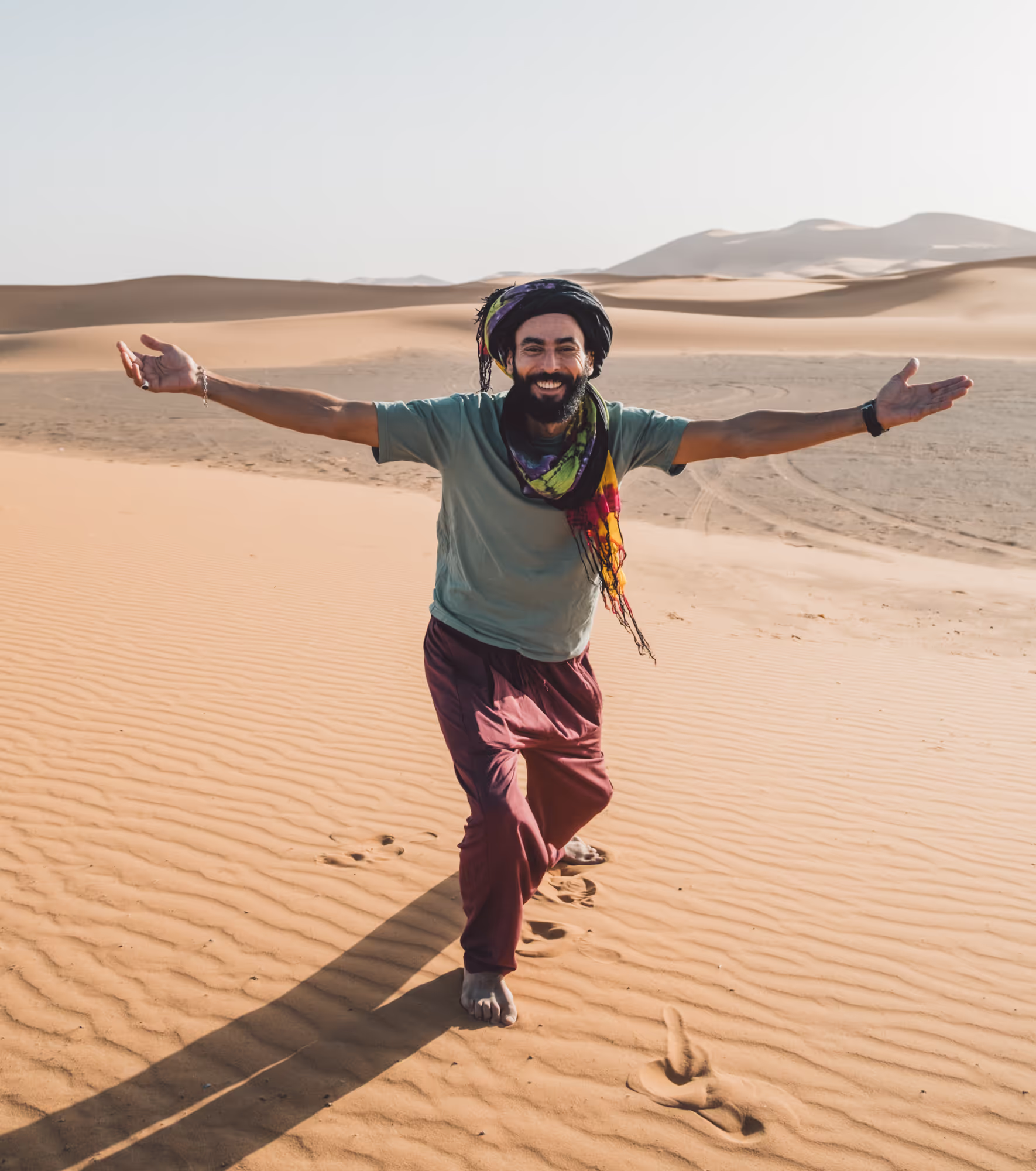
Noureddine Ingrioui
Lead Tour Guide
Posted on
Creating a list of the top things to do in Morocco seems almost impossible. After all, Morocco, as a North African country, is a stunning destination for anyone seeking a holiday filled with endless adventures and opportunities. With its imperial cities, off-the-beaten-path destinations, beautiful beaches, and rewarding surf spots, the amount of excitement awaiting in Morocco is uncountable.
To that end, here is a list of the top things to do while visiting Morocco:
Marvel at the Sahara Desert: Camping, camel trekking, and photography are among the top activities to enjoy in the Sahara. Erg Chegaga is an impressive place near Mhamid El Ghizlane, accessible only by camel or a four-wheel-drive vehicle. It is the largest sand sea in Morocco, stretching along 40km and bordered by mountain ridges. It is one of the two major ergs of the Moroccan Sahara, considered a relatively recent tourist destination. It began attracting visitors notably in the 1990s. This breathtaking land has some relatively low dunes, reaching around 120m. On the other hand, there is Erg Chebbi, famous worldwide for its high dunes, reaching over 160m, offering a stunning landscape. Erg Chebbi is more easily accessible compared to Erg Chegaga. The Moroccan Sahara desert is also known for the diversity of its outdoor activities, numerous views to enjoy, and the experience of sleeping under millions of stars. Watching the sunrise and sunset from the top of a dune will leave you fascinated by the beauty of the Moroccan desert. Moreover, sand surfing is also a fun activity, along with enjoying a campfire, trying local food, and meeting people from the area. This destination is known for its unique culture and traditions, offering an escape to another fascinating universe.
Explore the Imperial Cities: Fez, Meknes, Marrakesh, and Rabat are four well-known imperial cities in Morocco. Fez, considered the most exciting city, is surrounded by walls that extend for nearly 10 miles. This amazing city is composed of three parts: Fez el Bali, Fez el Jedid (built in the late 13th century), and the modern Fez, built by the French during the Protectorate. Meknes, where the focus of interest is the 17th-century imperial headquarters of Moulay Ismael, is one of the very few holy places that non-Muslims are allowed to enter. With its beautiful sights, souks, and the Koutoubia Tower, there are many hidden highlights in Marrakesh, including the Saadian tombs, the magnificent Ibn Youssef Medersa, the Bahia Palace, and much more, not to mention its famous gardens like Jardin Majorelle, created by a French painter and later owned by Yves Saint-Laurent. Finally, Rabat, the welcoming capital city of Morocco, boasts a rich history and wonderful monuments like Chellah, the remains of a pre-Islamic city abandoned in 1154. This beautiful and fascinating site allows visitors to explore Roman and Islamic ruins. The Hassan Tower is a majestic mosque built by Yacoub-el-Mansour, and right next to it is the beautiful tomb of King Mohammed V and his two sons. Rabat is also famous for its zoo, opened in 2012, where visitors can admire more than 130 species of animals.
Journey through the Mountains: Seeking adventure? Morocco has four major mountain ranges. The High Atlas Mountains can be explored from Marrakesh, including the tallest mountain, Jbel Toubkal, the highest point in North Africa, which takes an average of three days to climb to its 4,167m summit. The Middle Atlas range includes Ifrane with its French-inspired design, and the Rif Mountains in the north of the country are ideal for outdoor activities. The Berbers, the original inhabitants of this area, are known for being welcoming to visitors.
Learn to Cook Moroccan Dishes: A trip to Morocco will undoubtedly be filled with delicious dishes, so why not learn how to make them yourself? Many cooking schools offer different types of classes that include trips to buy fresh ingredients and explanations about the different herbs and spices that are essential for all Moroccan dishes.
Take a Long, Relaxing Bath in a Moroccan Hammam: The best thing to do after a long adventurous day is to visit a traditional Hammam. It is considered a place where people of all social classes meet and discuss. Additionally, it’s known for its unique rituals, starting with the application of black soap all over the body, followed by exfoliating the dead skin with a glove, and then using a ghassoul mask, which absorbs impurities and purifies the skin. In the most luxurious hammams, the treatment ends with rehydrating the skin with pure argan oil. After the Hammam session, it is important to enjoy a cup of Moroccan mint tea and just relax, savoring a moment of inner peace.
Try Moroccan Dishes: With its spices and intriguing flavor combinations, Moroccan cuisine is considered one of the greatest in the world. Influenced by Andalusian, Spanish, Arabian, and French cooking traditions, Moroccan cuisine is truly unique. With this in mind, don’t leave Morocco without trying the following dishes:
- Bissara: A rich soup of beans traditionally served for breakfast in winter, with fresh homemade bread and topped with olive oil and cumin.
- Couscous: Moroccan families usually prepare this dish each Friday as a ritual; it is composed of fine pasta rolled by hand with meat, covered by a pyramid of vegetables.
- Bastilla: A very delicious and special pie, made with pigeon meat, almonds, and eggs spiced with saffron, all wrapped in paper pastry and dusted with cinnamon and icing sugar.
- Tagine: A North African dish named after the earthenware pot in which it is cooked. It can be made with different vegetables and meat and is generally cooked at a low temperature, resulting in tender meat and a delicious sauce.
Visit Jamaa el Fna: Considered one of the best-known squares and marketplaces in Africa, and one of UNESCO’s World Heritage sites, Jamaa el Fna is a must-see for everyone visiting Morocco. It stuns visitors with its colorful handicrafts, food stands, and alleyways. Jamaa el Fna in the morning is not the same as in the evening. During the day, the square is filled with orange juice stands and snake charmers, while at night, it fills up with food stalls, storytellers, magicians, and women offering Henna tattoos. The surrounding souks are filled with local goods to take home as souvenirs from this magical place, but bargaining and comparing prices is a must. Be prepared for a sensory overload of sights, sounds, smells, and much more.
Gorges of Todra Valley: Walking through this immense oasis puts you face to face with stunning landscapes of canyons and gorges. This valley extends between the High Atlas and is about 180 km from Ouarzazate. The canyon walls can reach heights of up to 400 meters in some places.
Ait Ben Haddou: Ait Ben Haddou is a group of earthen buildings located in Ouarzazate, representing the traditional pre-Saharan habitat. It is considered a striking example of southern Moroccan architecture. The ksar Ait Benhaddou is recognized as a UNESCO World Heritage site and is known as one of the most breathtaking Kasbahs in Morocco. This place deserves to be at the top of Morocco travel lists. It is decorated with colored walls and towers and is divided into two parts: the modern part, where you find tourist shops, and the second part, the "ksar," where the real fantasy exists.
Chefchaouen: Also known as the Blue City due to the color of its buildings and walls, this enchanting and old city (established in 1471) has much to see, enjoy, and do. This beautiful blue pearl is one of the biggest tourist attractions in Morocco, drawing visitors from all over the world. It boasts a mesmerizing traditional souk where you can find wonderful traditional souvenirs. Chefchaouen is also known for its relaxed ambiance, which is hard to find in big cities like Casablanca, Fez, or even Marrakesh. While in Chefchaouen, don’t miss the Akchour Cascades, a stunning natural setting with crystal blue waterfalls that match the town’s theme. Don’t leave the city without taking a walk across the wonderful God’s Bridge, known as "Pont de Dieu."
The Jardin Majorelle: A fascinating place that took forty years (1886-1962) of passion and creativity to create, designed by the French painter Jacques Majorelle. The subtropical garden is located in the heart of Gueliz in the imperial city of Marrakesh. Although it has existed in Morocco for decades, the Majorelle Garden was made famous abroad when its owner, the French designer Yves Saint Laurent, featured it in the Chelsea Flower Show in London. The garden is home to over fifteen different bird species, which is no surprise given its lush bamboo groves, date palms, and lily-covered pools. While visiting the Jardin Majorelle, you also have the chance to discover the Islamic Art Museum located on the garden’s grounds, as well as Northern African textiles, pottery, ceramics, paintings, and even some of Yves-Saint-Laurent’s personal collection.
Hassan II Mosque: The largest mosque in Morocco, the second largest in Africa, and the fifth largest in the world, with the tallest minaret at 210 meters. This magnificent building was designed by Michel Pinseau and built by Bouygues. The walls are made of handcrafted marble, and worshippers can pray overlooking the Atlantic Ocean. Its capacity is 105,000 worshippers. With the death of King Mohammed V in 1961, his son King Hassan II requested the best artisans to create a mausoleum in honor of the departed king. Construction began in July 1986 and continued over seven years, with the formal inauguration on the 11th of Rabi al-Awwal, 1414, in the Islamic calendar, which coincides with the eve of the Prophet Muhammad’s birthday. The construction cost is estimated to be about 585 million euros. At that time, the Moroccan government lacked funds for such a project, so much of the financing came from public subscription.
Essaouira: A small seaside town famous for attracting big names such as Jimi Hendrix and Bob Marley, Essaouira is the perfect place to escape from daily stress. In the old Mogador, it is essential to walk through the souks to feel its authentic Moroccan spirit, as well as through many art galleries. Hippie communities and painters seeking inspiration and new vibes frequently visit Essaouira. Mogador is the pearl of cultural tourism, and since the creation of the Gnaoua Festival, the city has experienced an economic boom that has impacted many sectors, including the hotel and restaurant industry and the sale of handicrafts. During this event, the city of 70,000 inhabitants sees its population multiply by six.
Kalaa Magouna: A small city near Ouarzazate with a valley of roses, which extends over several tens of kilometers. This festival is very popular with both foreign tourists and Moroccans who come from other cities to attend and discover perfumes and cosmetics made from rose petals. Rose water is highly appreciated in traditional cuisine, as well as in oriental pastries. During the festival, the inhabitants sing and dance in the streets, performing traditional dances such as Ahidous, or the dance of bees. At the same time, a young single woman is elected Miss of the Roses, and she parades on her flower-decorated chariot, accompanied by music and songs. The date of the festival varies, but it is generally held during the first two weeks of May.
Festival of Imilchil: The great peculiarity of Imilchil’s festival lies in the collective marriage ceremony, which dates back to a distant history. According to legend, two rival tribes of Ait Hddiddou, Ait Brahim, and Ait Yaaza, who had been at war over the exploitation of grazing land and irrigation water, refused the marriage of a young man from Ait Brahim with a young woman from Ait Yaaza. The lovers fled to the mountain, where they cried, and their tears gave birth to the Isli and Tisli Lakes. The sages of Ait Haddidou then decided to reconcile the two tribes and marry the two young lovers. That is why this festival takes place every year in September. Men are assisted by a friend in choosing a bride. If the man and woman agree, they may hold hands, and then the couple meets with their families in a tent where the discussion continues.
Agadir: A wonderful city on Morocco’s southern coast, Agadir is one of the most modern cities in the country. The first thing to do in Agadir is hike to the high Kasbah to visit an example of Arabic architecture and enjoy the view it offers over the city, especially at night. Souk El Had is a place where many of the city’s residents do their shopping, and it is a wonderful place to get lost in for a while. Explore Crocoparc, home to several generations of over 300 Nile crocodiles. Observing these creatures from a secure vantage point is a fascinating experience. Agadir’s beaches are considered the best in Morocco, especially Taghazout Beach, with its very fine sand and warm water. It is also a great place to walk around and enjoy the beauty of argan trees or go surfing. In Agadir, you can also connect with nature at Paradise Valley, where you will be able to hike the mountains and enjoy a swim in the natural pools. The Agadir Marina is a tourist complex where you can first visit brand-name stores, then taste dishes offered by restaurants, and even enjoy a boat trip. Don’t forget to have fun on La Grande Roue Agadir, a Ferris wheel near the beach that offers a fantastic view of the beach and the surrounding areas. It is especially enjoyable at night.
Thanks for reading
For over 20 years, we've been guiding travelers across Morocco from the peaks of the Atlas Mountains to the depths of the Sahara. To explore Morocco your own way and support our work, check out our private tours and Tailor Made Morocco Tours.
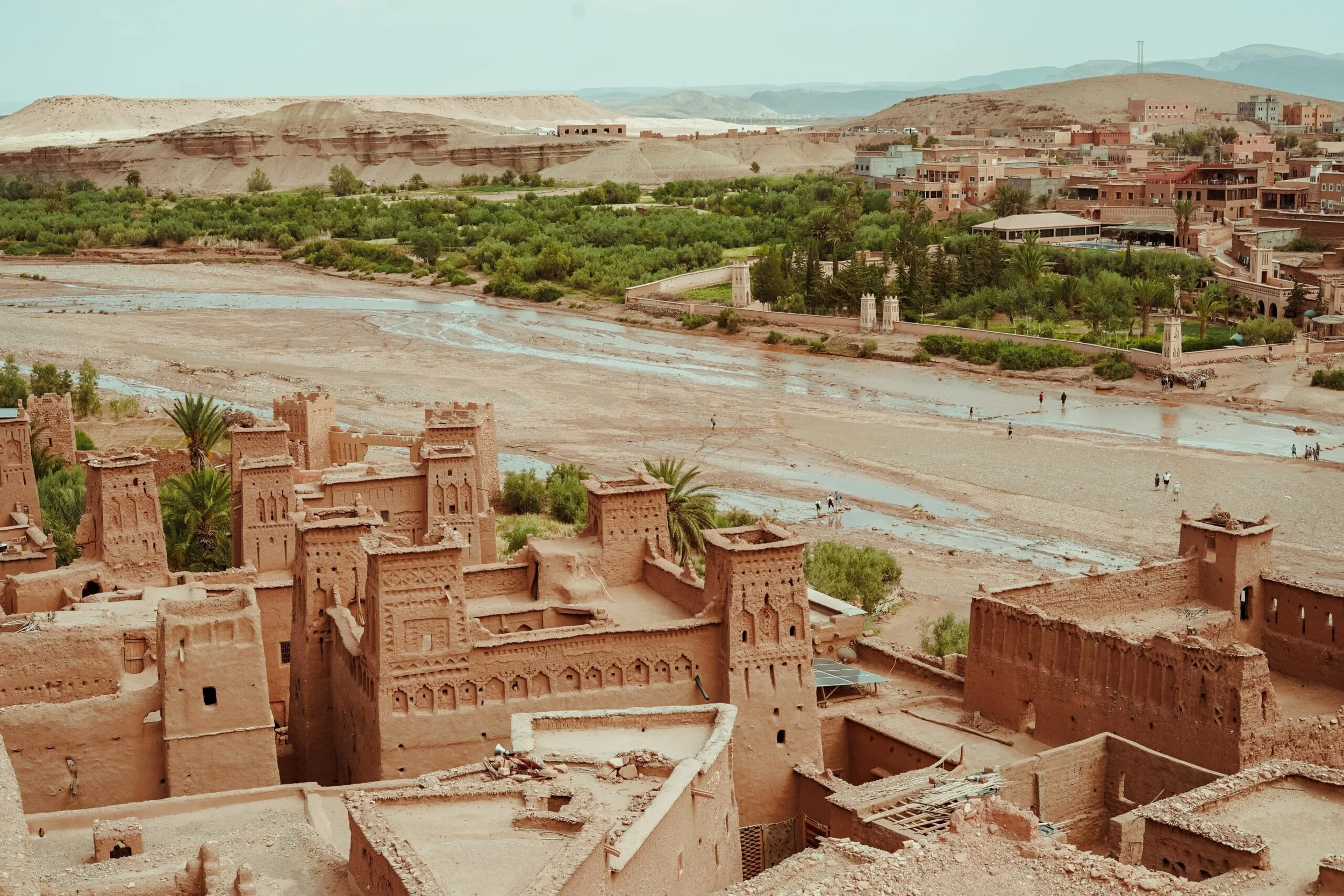
Contact Us
GET IN TOUCH
Ready to take the next step? Whether you’re ready to book or just exploring possibilities, we’re here to help. Share a few details with us, and our team will reach out
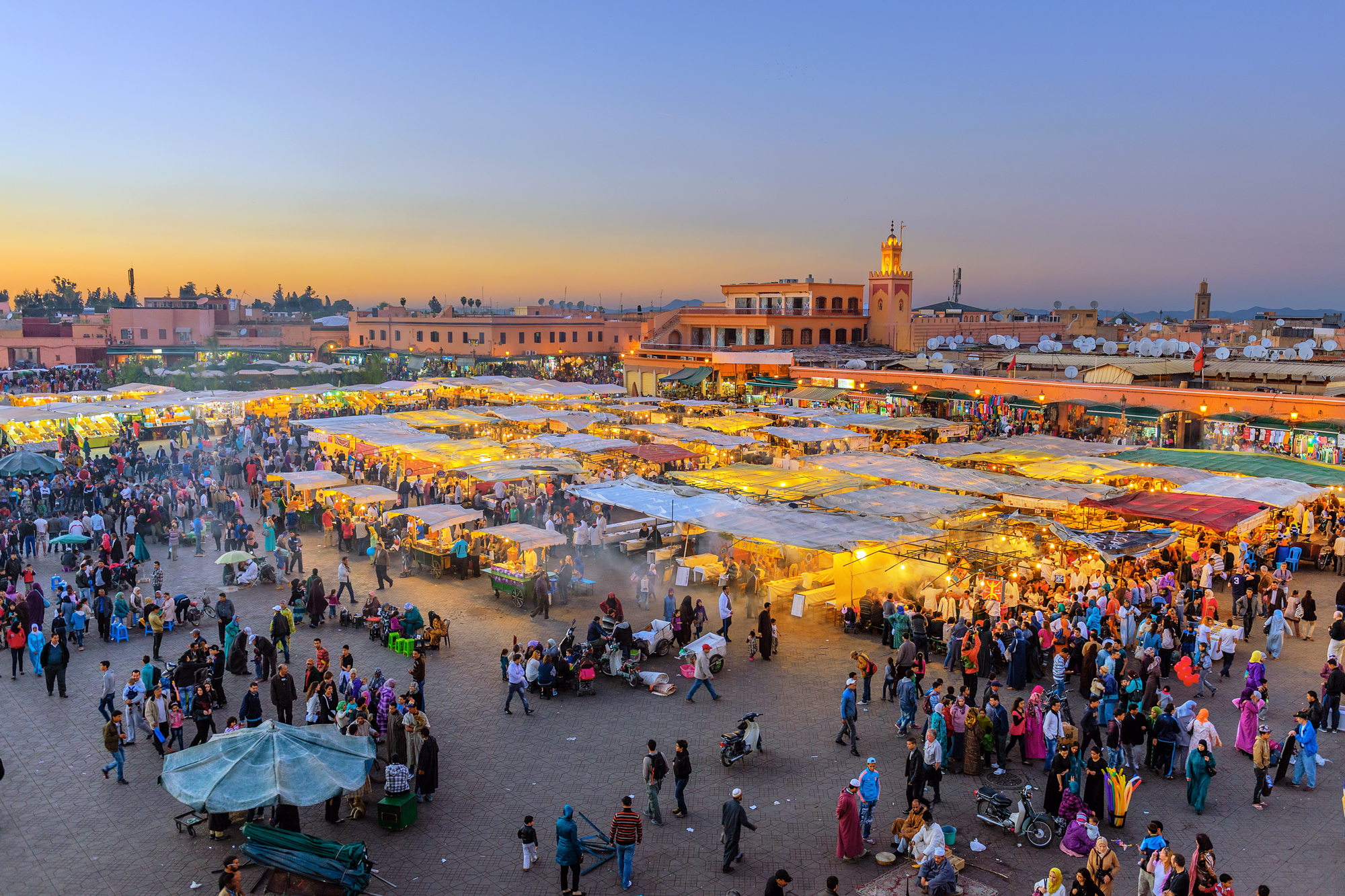
.webp)
